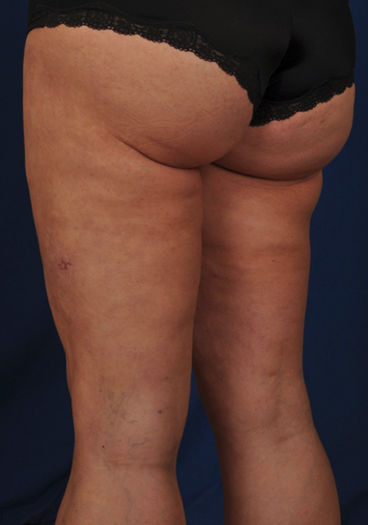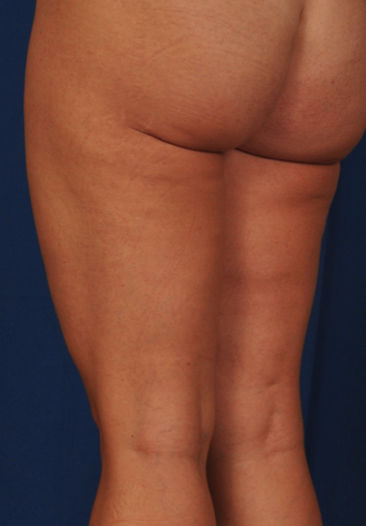
When it comes to plastic surgery, there are choices when it comes to anesthesia. The procedure can either be done awake with local anesthesia or fully asleep under general anesthesia. With either form of anesthesia, the techniques and technology used are the same, and the results are the same. However, when a surgeon is drawing up a treatment plan, both doctor and patient will come to a consensus about anesthesia choice, long before the surgery takes place.
Factors that may influence anesthesia choice include the type of procedure the surgeon will be performing, a patient’s medical history, and patient preference. In fact, some patients will request local anesthesia as they want to be awake for the duration, while others simply say “just knock me out and wake me up when it’s all over.” But, for patients interested in finding out more about local anesthesia, and what that may mean for their procedure, there are some important details to consider before making the choice.
Denver Lipo provides patients with the most suitable anesthesia options for their needs. To book a personal consultation to discuss your preferences, call our Englewood office at (720) 372-2155 or complete our simple online form to book an appointment.
Contents
Before and After Photos
How Does Local Anesthesia Work?
Pharmacology is the science of how drugs work inside the body and the biological processes that take place when medications are ingested. In the case of local anesthesia, the basic mechanism that makes it work is its ability to block nerve pathways.
About Lidocaine
One of the most commonly-used anesthesia subtypes is lidocaine. This amino acid-based local anesthesia is not only used at the site of the procedure, making up a fraction of the tumescent liposuction solution, but can also be used as a nerve block for the wider area. But how does it work?
The chemical element sodium (Na) plays a vital role in nerve function, and this is the molecule targeted by anesthesia. Without over-complicating the issue, the reason why lidocaine works is that its molecules can physically block sodium ion (positively charged sodium, Na+) channels in nerve cell membranes. (1) This means the patient will feel no nerve sensations in the area during a local anesthesia procedure, and therefore experience no pain.
Local Anesthesia vs. General Anesthesia
General anesthesia renders the entire body unaware of what is happening to it. And for some people, this can be a little daunting. It causes deep sedation, and frequently requires mechanical ventilation, meaning a machine will help the patient breathe during the surgery. With local anesthesia, this is not necessary.
Considerations for General Anesthesia (2)
- Higher Likelihood of Nausea
- Sore Throat/Muscle Aches
- Slightly Longer Recovery Period
- More Costly Procedure due to facility and anesthesiologist fees
The amount of lidocaine used is based on a patient’s weight, and there are limitations regarding what can and cannot be done with local anesthesia. Although it is often a simple “either/or” choice, certain procedures, such as the tummy tuck (abdominoplasty) can only be performed using general anesthesia.
Benefits of Local Anesthesia
Cost-Effective
The most obvious benefit of a local anesthesia procedure is its cost-effectiveness. Choosing local over general anesthesia means it is not necessary to have the procedure done in the OR, foregoing operating room charges, and additional anesthesiologist costs.
No Airway Issues
With local anesthesia, there is no need to intubate a patient. Though there is only a small risk of complications relating to airway impairment with general anesthesia, local anesthesia means a patient will be awake and breathing for themselves throughout the surgery.
More Comfortable
It is not uncommon to experience nausea and vomiting with general anesthesia. In fact, it’s one of the most frequently cited complaints following surgery. (3) With local anesthesia, patients can look forward to the reduced risk of sickness to the stomach.
Smoother Recovery
In most cases, a surgery performed under local anesthesia will require far less post-operative care than those performed under general. This is because the stresses the body is put under are significantly reduced in comparison. Because fewer medications are needed to manage the patient, recovering can be simpler and shorter with local anesthesia.
Book your personal consultation to discuss anesthesia at Denver Lipo by calling us at (720) 372-2155.
What is PRO-NOX?
Denver Lipo uses PRO-NOX for some local anesthesia surgeries. PRO-NOX is a delivery system for an analgesic agent which is composed of 50% oxygen and 50% nitrogen (nitrous oxide), commonly referred to as “laughing gas.” Nitrous oxide can be administered on demand, to a conscious patient who is breathing of their own accord to relieve pain, making the procedure more comfortable.
Limitations & Special Circumstances
If your surgeon is treating more than 3 or 4 areas, general anesthesia is almost always recommended. The amount of fat that can be removed at one time during liposuction is limited to 10 lb.
There are also certain patient demographics that require special attention and more individualized treatment plans. These patients do not numb well, meaning we will recommend general anesthesia over local.
- Patients who don’t numb well at the dentist’s office
- Patients with diagnosed anxiety, or those who are very nervous
- Patients with prior history of, or present opioid use
- Patients with naturally red/auburn hair
Why Don’t Patients with Red Hair Numb Well?
Natural redheads require around 20% more anesthesia than non-redheads. (4) This is because genetic differences cause those with red hair to experience pain in a different way to the rest of us. Pain tolerance is generally lower, so this must be factored into a natural redheaded patient’s treatment plan.
Personal Consultation
Your personal consultation at our office in Englewood will give you the opportunity to discuss several surgical and anesthesia options. At Denver Lipo, we can perform all surgeries except for the tummy tuck with local anesthesia.
Surgical Services
As with any surgery, we will assess your needs on a case-by-case basis. We will run through the requirements for liposuction surgery, including the pre- and post-operative instructions. We would also love to hear from you if you have multiple areas of concern, which can be treated simultaneously.
Areas Treated with Liposuction
Liposuction with Local Anesthesia
Liposuction with local anesthesia is easy. Procedures can be performed while a patient is awake in our minor surgery room. When you arrive, we will give you medication such as diazepam (Valium) or triazolam (Halcion) to help you to relax and prepare for the procedure. After relaxing in our comfortable massage chair, we will begin the surgery once this medication has taken effect. During the procedure itself, your surgeon will numb the target area locally with lidocaine. We will then administer nitrous oxide using PRO-NOX.
Cost of Liposuction in Denver
The cost of your procedure will depend on how many areas we will be treating, and the type of anesthesia administered. For a comprehensive run-down of your options, please arrange a personal consultation with us by calling our Englewood office directly at (720) 372-2155, or by submitting a simple inquiry form online.
Read more about our liposuction services in Denver by selecting an article from the Denver Lipo blog!
FAQ
Can I get liposuction with local anesthesia?
Yes! Although some procedures will always require general anesthesia, there are many liposuction options that can be performed while you are awake and only locally numbed. Speak to your surgeon about the benefits of local anesthesia to find out if it is right for you.
Are local anesthesia surgeries shorter or longer?
It depends on the number of areas being treated, but generally, those performed while a patient is under local anesthesia are shorter, with a more straightforward recovery.
Why do some people need more anesthesia?
There are a few reasons why some people need more anesthesia than others. Firstly, anesthesia amounts are based on a patient’s weight. Secondly, there may be something in their medical history or their genetics that causes changes in their pain tolerance and their response to numbing (such as opioid use or being a natural redhead).
Can a tummy tuck be performed while a patient is under local anesthesia?
Local anesthesia is generally not recommended for abdominoplasty patients. This is because many surgeons consider general anesthesia the safer option given the complexity of the surgery.
References
- 1. Beecham GB, Nessel TA, Goyal A. Lidocaine. PubMed. Published 2022. https://www.ncbi.nlm.nih.gov/books/NBK539881/#:~:text=Lidocaine%20is%20a%20local%20anesthetic
- Jung J, Kim DH, Son J, Lee SK, Son BS. Comparative study between local anesthesia and general anesthesia in the treatment of primary spontaneous pneumothorax. Annals of Translational Medicine. 2019;7(20):553. doi:https://doi.org/10.21037/atm.2019.09.89
- Rüsch D, Eberhart LHJ, Wallenborn J, Kranke P. Nausea and Vomiting After Surgery Under General Anesthesia. Deutsches Aerzteblatt Online. Published online October 22, 2010. doi:https://doi.org/10.3238/arztebl.2010.0733
- Liem Edwin B, Lin CM, Suleman MI, et al. Anesthetic Requirement Is Increased in Redheads. Anesthesiology. 2004;101(2):279-283. doi:https://doi.org/10.1097/00000542-200408000-00006









